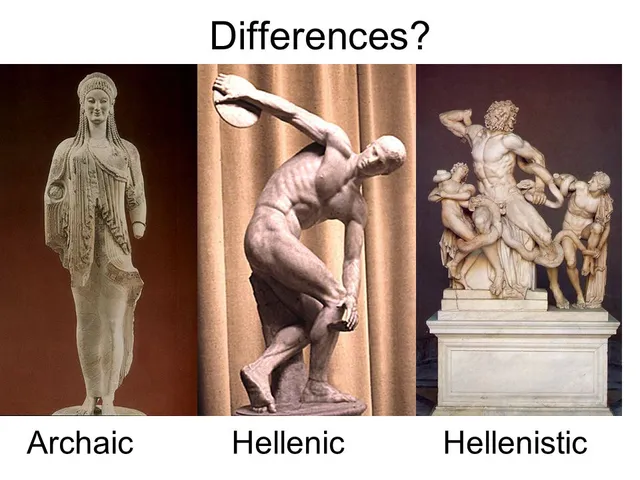
What are the three levels of culture that sociologists study?
When it comes to studying the complexities of culture, sociologists often break down their research into three distinct levels. These levels consist of material culture, nonmaterial culture, and symbolic culture. To understand culture more completely, it’s important to explore each of these levels in detail.
Material Culture
Material culture refers to the physical objects and artifacts that are produced and used within a given culture. This includes the tools, weapons, houses, clothing, and other objects that are created by the members of a society. In some cases, material culture can even refer to things like roads, monuments, and other items that are made by the government. When studying material culture, it’s important to consider how each item is used and how it contributes to the overall culture.
Nonmaterial Culture
Nonmaterial culture refers to all of the intangible aspects of a culture. This includes things like beliefs, values, language, and social norms. Nonmaterial culture is more abstract than material culture, and it can be harder to study. However, nonmaterial culture is incredibly important in understanding a culture, as it can help to explain why certain beliefs and values are held by a society.
Symbolic Culture
Symbolic culture refers to the symbols and signs that are used within a culture. This includes things like gestures, words, images, and symbols. Symbolic culture is important in understanding a culture, as it can provide insight into the beliefs and values of a society. For example, symbols like the American flag can be seen as a representation of patriotism and freedom.
By understanding the three levels of culture, sociologists are able to more effectively study the intricacies of culture. By examining material culture, nonmaterial culture, and symbolic culture, sociologists can gain a comprehensive understanding of the beliefs, values, and customs of a given culture.
When studying culture, sociologists often look at it in three different levels: the macro, meso, and micro levels. Each level serves a different purpose, has different features, and has a different impact on social interaction.
The macro level is the broadest level of culture. It encompasses the values, beliefs, and norms of an entire society. This level of culture is often used to explain why societies behave in certain ways, and how one society is different from another. It is also the level of culture that is most visible to outsiders.
The meso level of culture is the middle level. It examines the culture of smaller groups within a society, such as a family, a religion, or a profession. This level of culture is important for understanding how members of these groups interact with each other and how they are different from outsiders.
The micro level of culture is the most specific level. It looks at the culture of individuals, and how their personal values and beliefs affect their interactions with others. This level of culture is important for understanding why individuals act the way they do, and how they may be different from others in their group.
Each level of culture has a different impact on social interaction. The macro level explains why societies behave in certain ways, while the meso level explains how different groups within a society interact with each other. Finally, the micro level explains why individuals act the way they do.
By understanding the different levels of culture, sociologists can gain a better understanding of how culture affects social interaction. This can help them to better understand how societies can work together, and how individuals can interact with each other.
When we think about culture, we often think about things like art, music, and food. But culture is much more than that. Sociologists have identified three levels of culture that shape our everyday lives: material culture, non-material culture, and values.
Material culture refers to the physical objects that humans create and use. This includes items such as clothing, tools, furniture, and technology. These objects can be used to express our cultural identity and beliefs. For example, the type of clothing we wear can say a lot about our values and beliefs.
Non-material culture refers to the ideas, beliefs, and values that define a culture. This includes things like language, religious beliefs, customs, and traditions. These aspects of culture can influence how we interact with each other and the world around us.
Values are the beliefs and standards that are important to a culture. They can include things like loyalty, honesty, respect, and success. These values can guide our behavior and shape our decisions.
By understanding these three levels of culture, we can gain insight into how our cultural beliefs and practices shape our everyday lives. This understanding can help us to better understand and appreciate different cultures, as well as our own.
We often talk about culture as if it’s one cohesive concept, but sociologists have identified three distinct levels of culture: material, symbolic, and ritual.
Material culture refers to physical objects that are created, used, and shared within a society, such as tools, clothing, and buildings. These objects shape our lives by influencing our behavior, beliefs, and values. For example, the use of cars has given people more mobility, which has changed the way we live and work.
Symbolic culture is made up of symbols, such as language, gesture, and artwork, which are used to communicate shared meanings and beliefs. These symbols are highly influential and help to define our cultural identity. For instance, the American flag is used to represent patriotism and a sense of national pride.
Finally, ritual culture is composed of rituals, such as ceremonies and festivals, which are shared activities that serve to reinforce cultural norms and values. These rituals provide a sense of unity and belonging within a society, and help to define a group’s culture. For example, a traditional wedding ceremony is a ritual that celebrates the joining of two families, and reinforces the values of commitment and love.
By understanding the three levels of culture, we can gain a better understanding of how our cultural identity is shaped by symbols and rituals. It is only by unpacking the influence of these elements that we can gain a deeper appreciation of our own culture.
One of the most important elements of culture is language. It is the glue that binds us together and allows us to communicate, exchange ideas, and create shared meanings. It is something that we all have in common, regardless of where we come from or what language we speak, and it is essential to understanding the three levels of culture that sociologists study.
The first level of culture is the individual level, which encompasses the beliefs, values, and behaviors of an individual. This level is informed by the individual's personal experiences, upbringing, and environment. It is also influenced by language, as language shapes the way we think and interpret the world around us.
The second level of culture is the group level, which includes the customs, traditions, and beliefs shared by a group of people. This level is informed by the language used to express and share these beliefs, as language is used to describe, explain, and interpret the group's values and experiences. It is also important to note that language can be used to unite a group by emphasizing shared values and experiences, or to divide a group by emphasizing differences.
The third level of culture is the societal level, which encompasses the norms, values, expectations, and customs of an entire society. This level is informed by language, as language is used to construct our cultural narratives and shape our perceptions of the world. It is important to recognize the power of language in constructing our cultural narratives, as it can be used to create social cohesion and foster understanding.
In conclusion, language plays an essential role in constructing our cultural narratives and understanding the three levels of culture that sociologists study. It is the glue that binds us together and allows us to create shared meanings and experiences. Language is also a powerful tool that can be used to unite or divide a group, and to shape our perceptions of the world. By recognizing the power of language in constructing our cultural narratives, we can gain a better understanding of the complexities of culture.










